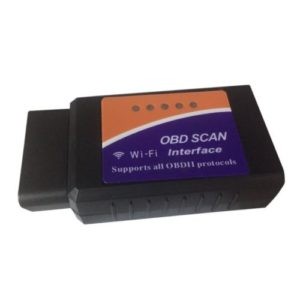Finding the right ELM327 OBD2 scanner can be tricky. With so many options available, how do you know which one is compatible with your car and smartphone? This comprehensive guide dives deep into the world of ELM327 OBD2 WiFi and Bluetooth scanners, helping you make an informed decision. We’ll cover connection types, compatibility with iOS and Android devices, and most importantly, how to avoid purchasing a subpar adapter.
Understanding ELM327 OBD2 Scanners
An ELM327 OBD2 scanner acts as the bridge between your car’s computer and your smartphone or tablet, allowing you to diagnose car problems, monitor performance, and access valuable data. Choosing the correct adapter is crucial for a stable connection and accurate readings.
ELM327 Connection Types: WiFi vs. Bluetooth
ELM327 adapters come in various connection types:
- WiFi: Connects to your device wirelessly through a WiFi network.
- Bluetooth (Classic): Uses older Bluetooth versions (1.x-3.x) for communication. Offers faster data transfer speeds than Bluetooth LE.
- Bluetooth LE (Low Energy): Uses Bluetooth 4.0 and above. Consumes less power but might have slower data transfer speeds compared to classic Bluetooth.
- Bluetooth MFi (Made for iPhone/iPad): Certified by Apple for seamless integration with iOS devices. Uses classic Bluetooth but requires a special agreement and licensing from Apple.
- USB: Not commonly used with ELM327 scanners and generally not supported by most diagnostic apps.
ELM327 Compatibility: iOS vs. Android
iOS (iPhone/iPad): Compatible with WiFi, Bluetooth LE, and Bluetooth MFi adapters. Classic Bluetooth adapters will not work due to iOS limitations. Bluetooth LE offers a balance of convenience and speed, while Bluetooth MFi provides the fastest performance but at a higher cost.
Android: Supports WiFi, Bluetooth (Classic), and Bluetooth LE. Classic Bluetooth is often recommended for Android due to its faster data transfer speeds and wider compatibility. However, simultaneous connection with other Bluetooth devices might cause issues on some Android devices.
Choosing a Quality ELM327: Avoiding the Pitfalls
The market is flooded with low-quality ELM327 adapters that can lead to frustrating experiences. Here’s what to watch out for:
- Unstable Connections: Bad adapters can freeze, reboot randomly, or disconnect frequently.
- Limited Command Support: Some adapters may not support all the necessary OBD2 commands, resulting in incomplete data.
- Data Loss or Corruption: Cheap adapters can lose or distort data during transmission, leading to inaccurate readings or even potential harm to your car’s computer.
Recommended ELM327 OBD2 Scanners
While we don’t sell adapters, we recommend considering the following based on user experience and feedback:
- OBDLink MX+ (Bluetooth MFi): High-end adapter with excellent performance for both iOS and Android.
- OBDLink CX (Bluetooth LE): Great performance and large memory buffer, suitable for iOS and Android.
- vLinker Series (Bluetooth LE/MFi): Offers various models with solid performance and firmware update capabilities. vLinker MC+ and FS are highly recommended.
- Vgate iCar Pro 2S (Bluetooth): An improved version of the iCar Pro BLE, compatible with most operating systems.
ELM327 Adapters to Avoid
Steer clear of adapters with these red flags:
- xTool Adapters: Not ELM327 compatible and only work with their own software.
- Wired Adapters (USB/COM): Most diagnostic apps do not support wired connections.
- “Mini” Adapters: Often low quality and unreliable.
- Extremely Cheap Adapters: If the price seems too good to be true, it probably is.
- Specific Brands: Avoid brands like KONNWEI, Micro Mechanic, THINMI.COM, and KUULAA due to reported quality issues.
Conclusion
Selecting the right ELM327 OBD2 WiFi Bluetooth scanner is essential for a successful diagnostic experience. By understanding the different connection types, compatibility issues, and potential pitfalls, you can confidently choose an adapter that meets your needs. Remember to prioritize quality and reliability over price to avoid frustration and ensure accurate vehicle data.


